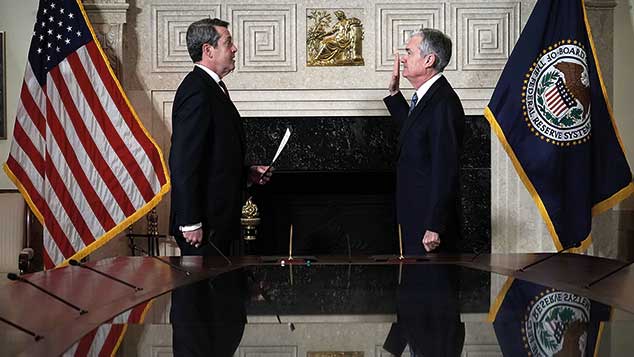
Jerome Powell, who was sworn in as chief of America’s Federal Reserve this week, faces a baptism of fire. If inflation is returning, he must ensure it doesn’t get out of control. Yet keeping the economic upswing going at the same time implies walking a tightrope – tightening monetary policy just enough to temper price rises, but not so much that the stockmarket and economy loses confidence and a recession ensues.
In the 1970s, inflation rose too far and it took a recession to subdue it. Powell (pictured left, standing on the right) was appointed by President Donald Trump, who will be “determined to deliver economic growth ahead of November’s election”, as Fidelity’s Tom Stevenson notes in The Daily Telegraph, so some think he may raise rates too slowly to keep growth going and avoid stockmarket jitters. To that end, he may loosen monetary policy if this sell-off turns really nasty.
But that would merely perpetuate our present dysfunction: placating nervous investors at the first sign of turbulence, and thereby blowing up damaging bubble after damaging bubble. Given the Fed’s inauspicious track record, investors should hold gold to hedge against both crisis and inflation.